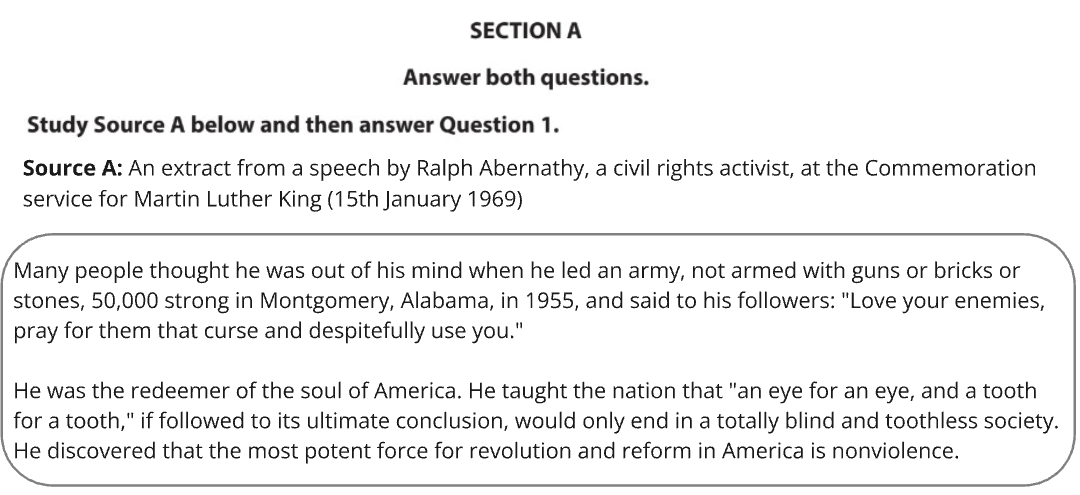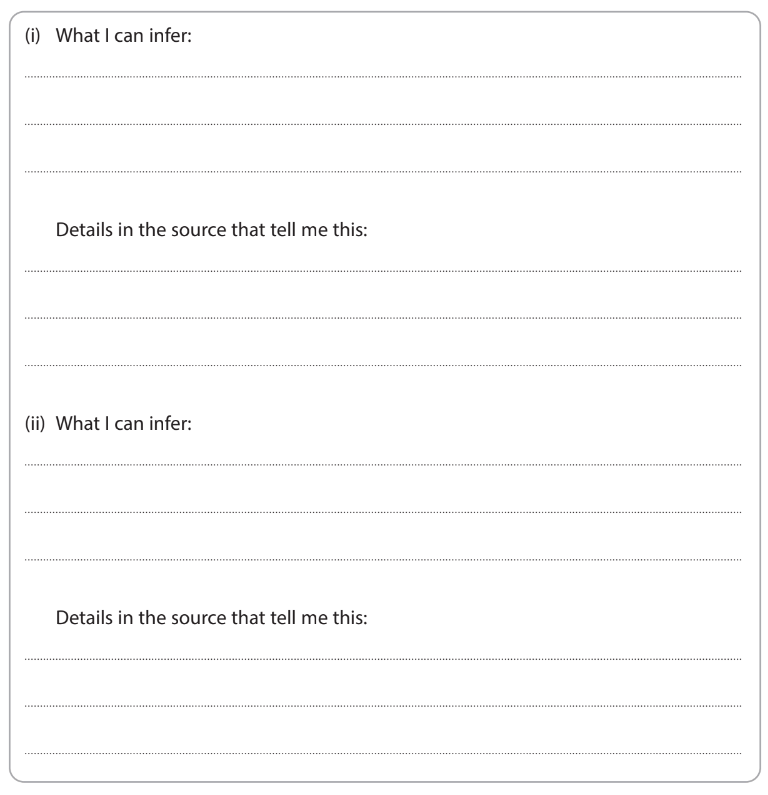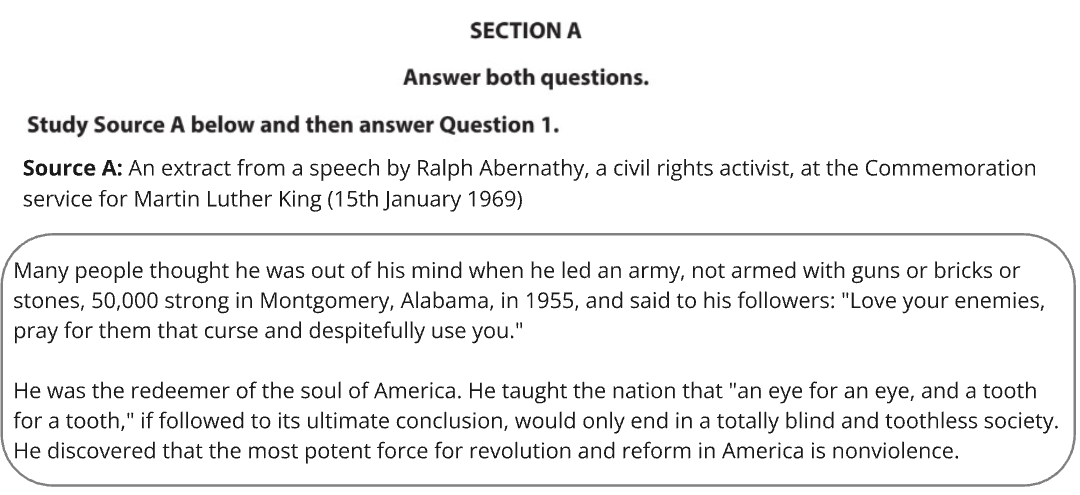The 4 Mark "Give Two Things You Can Infer" Question (Edexcel GCSE History): Revision Note
Exam code: 1HI0
Summary of Question 1
Question 1 requires you to make two inferences about Source A
Each inference must be directly supported by a detail or a quote from the source
The answer section is broken down into four guided questions
Amount of marks | 4 |
|---|---|
The time that you should spend on the question | No more than 5 minutes |
An example of the type of question you may encounter can be seen below:

In previous years, this question has focused on the following topics in The USA, 1954–75:
Year of Exam | Question Topic |
|---|---|
2018 | The aims of the Black Panther Party (opens in a new tab) |
2019 | Opposition to the desegregation of Little Rock High School (opens in a new tab) |
2020 | The March on Washington (opens in a new tab) |
2021 | Opposition to the war in Vietnam (opens in a new tab) |
2022 | Search and destroy missions (opens in a new tab) |
2023 | The Strategic Hamlet Program (opens in a new tab) |
2024 | The treatment of Black Americans in the 1950s |
What is an inference?
An inference is an educated guess based on evidence
To remember how to infer, follow these steps:
I notice — What does the source show or say?
I already know — What own knowledge do you have?
Now I am thinking … — Combine the above to make your inference
For The USA, 1954–75 exam, you will need to:
Study Source A
Utilise your own knowledge to make sense of the source
Make a statement about Source A, connecting what you can see and what you know
Using the content of a source
The content is the information presented in the source
The content could come from a variety of different types of sources, such as:
A picture
A photograph
An extract from a book
A speech
A political cartoon
A letter
You should use details from the content (a quote or description) to support each inference
In the example question, you should look at Source A for information about the impact of Martin Luther King
How to answer a "Give two things you can infer" question
Question 1 will always be based on Source A
You will find Source A on the first page of the answer booklet
Do not use the sources in the insert booklet
Sources B and C are clearly marked for Section B of the paper

To begin, read the question carefully
Underline the topic mentioned in the question
Read the source, in full, several times
If Source A is a visual source, take your time to study the source
Annotate the source by applying knowledge to the source that is relevant to the question
"Give two things you can infer" question structure
The "Give two things you can infer" answer space is laid out clearly into four guided sections

Section | What to Write |
|---|---|
"What I can infer" | Your first inference (1) |
"Details in the source that tell me this" | A quote (for a written source) or a description (for a visual source) (1) |
"What I can infer" | Your second inference, different from your first inference (1) |
"Details in the source that tell me this" | A different quote or a description (1) |
You will be limited to 2 marks if you:
Only write inferences
Only select details from the source
Write more than two inferences
Do not back your inferences with details from Source A
Worked example of a "Give two things you can infer" question
Worked Example
Give two things you can infer from Source A about the impact of Martin Luther King.
Complete the table below to explain your answer.

(4)
Answer:
What I can infer: Martin Luther King inspired many people to join the civil rights movement. (1)
Details in the source that tell me this: "He led an army, not armed with guns or bricks or stones, 50,000 strong in Montgomery, Alabama." (1)
What I can infer: Martin Luther King changed how Americans protested. (1)
Details in the source that tell me this: "He discovered that the most potent force for revolution and reform in America is nonviolence." (1)

Unlock more, it's free!
Did this page help you?